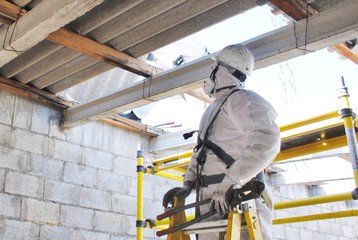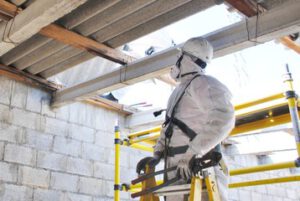Plumbing is a complex system that transports water to and from faucets, appliances, and fixtures. It also includes heating and cooling fluids and waste disposal. Its complexity requires detailed knowledge and training, which can be obtained through a combination of educational hours at a trade school or college and on-the-job experience.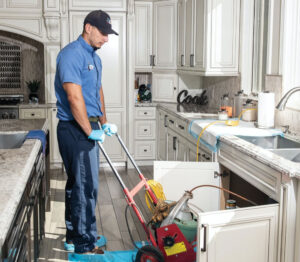
The cost of labor in plumbing is an important factor to consider when pricing a plumbing job. Plumbers typically charge by the hour and may have additional fees, such as a service fee or minimum charge. Depending on the job type, the labor cost can vary significantly. For example, if the plumber needs to disassemble and re-assemble an existing fixture, it can be more expensive than simply installing a new one. Visit https://freedomplumbingnj.com/ for more details.
The price of materials is another crucial component in a plumbing estimate. It includes the cost of pipes, fittings, and other necessary supplies. It also includes any associated fees, such as the cost of delivery or sourcing. In addition, it is important to check local taxes and fees, which should be included in the final cost of materials.
Other costs of a plumbing project include labor and permits. In some cases, the plumber will need to submit an application for a permit to work on a specific part of the plumbing system. These expenses can add up quickly, especially for large projects. For this reason, it is important to be clear and transparent with customers about these costs when creating a plumbing estimate.
To calculate the cost of materials, start by looking at the plan drawings and measuring the pipe from the plans. Then, add the cost of the required fixtures and components to determine the total cost. Finally, add the cost of labor and overhead to the total cost of materials to determine the price of the completed job. Ideally, this price should be high enough to cover the wages of the plumbers, pay overhead costs, and make a profit. If it’s not, the plumber should re-assess their pricing structure and make changes accordingly. This way, they can remain competitive and provide a high-quality service for their clients. A well-prepared plumbing estimate is a powerful tool that can help you land more jobs and boost your business. A detailed and accurate plumbing estimate will show your potential customers that you take the job seriously and are worth hiring.
Cost of materials
Several factors determine the cost of materials in plumbing. The type of material you choose, labor and overhead costs, and other considerations all affect the final price of your project. Choosing the right materials can help you save money on future repairs and maintenance. Using the Building Information Modeling software to optimize your plumbing layout can also reduce material and labor costs.
Pipes are used to transport water from the main supply line to various fixtures in homes and buildings. There are many different types of pipes, each with its own advantages and disadvantages. The most common types are copper, PVC, and CPVC. Each has its own unique qualities and pricing structure.
In addition to piping, plumbing supplies include toilets and faucets. These can be purchased in a variety of styles and finishes. You can find these products at your local home improvement store or online. It’s important to purchase quality products, which will last longer and prevent leaks. You should also consider the number of fixtures you need, as this can affect your budget.
The type of piping material you use will also affect the cost of your plumbing job. For example, copper pipes are very durable and have been the standard for piping since the 1960s. Copper pipes require soldering and additional fittings, which makes them more expensive than other piping options. Additionally, they are attractive to thieves, as they contain valuable metal.
Another type of piping is PEX, which is made from cross-linked polyethylene. This new plumbing material is much cheaper than copper and offers a quicker installation time. It is also safe for drinking water and can be installed in existing homes.
Building permits are required for many plumbing projects, including repairs and replacements. Generally, the plumber will secure these permits for you. However, if you are doing the work yourself, you will need to pay for the permit. The permit fees vary depending on the type of project and the location.
The profit margin is a crucial component of any plumbing company’s business plan. In order to calculate your profit margin, you must know your total project cost, materials, and overhead. By incorporating these into your final pricing, you will be able to meet your financial goals and grow your business.
Cost of equipment
Plumbing is a crucial component of a home or business and provides a safe environment for occupants. Its main purpose is to supply clean water and to remove waste, which can be a major health issue if not properly handled. It also helps regulate temperature and makes the home or office more comfortable. Plumbing systems are complex and require special training and skills. Plumbers are responsible for installing, repairing, and maintaining these systems.
In addition to plumbing, plumbers often install and maintain heating and cooling systems. They must also be knowledgeable about electrical wiring and have the ability to read blueprints and understand the principles of engineering. The most common way for plumbers to learn these skills is through an apprenticeship program, which can last four to five years. Many apprenticeship programs are sponsored by companies or trade schools. In these programs, students take classes on plumbing codes, regulations, and blueprint reading, while they gain practical experience under the supervision of a master plumber.
Plumbers can work in a variety of settings, including residential homes, hospitals, and factories. They can also be independent contractors, which allows them to choose their projects and schedules. However, they must be prepared to work in physically demanding jobs that can involve lifting heavy objects and working in tight spaces.
Some plumbing jobs involve the installation of new pipes and fixtures, while others require repairing existing ones. These tasks can be very hazardous, as they may involve working with chemicals and sewage. Plumbers should always wear protective gear and follow safety protocol when performing these tasks.
Whether you’re fixing a leaky tap or installing a whole new bathroom, the cost of equipment can add up quickly. While it’s important to have a complete tool kit, you can reduce the total cost by buying used or discounted tools. It’s also a good idea to invest in some apps that can help you get the job done faster. For example, a flow rate calculator app can be helpful for determining how fast water can pass through a pipe based on its length and diameter.
Cost of installation
If you’re in the market for a new plumbing system, it’s important to understand the cost of installation. This will help you set your budget and make informed decisions about what type of plumbing fixtures to purchase. There are four major factors that determine the cost of a plumbing project: scope, materials, fixture costs and labor.
A plumber’s hourly rates vary depending on experience and the type of work performed. The national average for a plumber is $100 per hour, plus a service fee or minimum charge. Plumbing emergencies tend to cost more, particularly when they occur outside of business hours. This is because the plumber will usually have to travel and may be working at a higher rate to cover travel expenses and additional time on the job.
In addition to the above considerations, there are other variables that can affect plumbing cost. For example, the pipe material used can have a significant impact on price. Copper is generally more expensive than PEX or CPVC, but it’s worth the investment over time because it lasts longer and requires less maintenance. Moreover, it’s compatible with many water-based appliances and systems.
Another factor that can impact the cost of plumbing is the number of fixtures being installed. For instance, a plumbing contractor might install 2 toilets and sinks for a home renovation, while it would likely need to install 25 or more fixtures for a commercial project. The number of fixtures also impacts the plumbing’s rough-in and finish costs.
While many people don’t think about their plumbing until something goes wrong, it is important to take care of the pipes in your house. This will reduce the likelihood of a costly repair down the road. Regular maintenance can include checking for leaks and ensuring that your fixtures are working properly. It’s also a good idea to have your home’s plumbing inspected regularly by a professional.
If you have an older home, it’s a good idea to replace the old pipes with PVC or PEX piping. These pipes are durable, inexpensive and easy to install. You can also choose from a variety of finishes and styles to match your home’s décor.
Plumbing is a complex system that transports water to and from faucets, appliances, and fixtures. It also includes heating and cooling fluids and waste disposal. Its complexity requires detailed knowledge and training, which can be obtained through a combination of educational hours at a trade school or college and on-the-job experience.
Cost of labor
The cost of labor in plumbing is an important factor to consider when pricing a plumbing job. Plumbers typically charge by the hour and may have additional fees, such as a service fee or minimum charge. Depending on the type of job, the cost of labor can vary significantly. For example, if the plumber needs to disassemble an existing fixture and re-assemble it, it can be more expensive than simply installing a new one.
The price of materials is another crucial component in a plumbing estimate. It includes the cost of pipes, fittings, and other necessary supplies. It also includes any associated fees, such as the cost of delivery or sourcing. In addition, it is important to check local taxes and fees, which should be included in the final cost of materials.
Other costs of a plumbing project include labor and permits. In some cases, the plumber will need to submit an application for a permit to work on a specific part of the plumbing system. These expenses can add up quickly, especially for large projects. For this reason, it is important to be clear and transparent with customers about these costs when creating a plumbing estimate.
To calculate the cost of materials, start by looking at the plan drawings and measuring the pipe from the plans. Then, add the cost of the required fixtures and components to determine the total cost. Finally, add the cost of labor and overhead to the total cost of materials to determine the price of the completed job. Ideally, this price should be high enough to cover the wages of the plumbers, pay overhead costs, and make a profit. If it’s not, the plumber should re-assess their pricing structure and make changes accordingly. This way, they can remain competitive and provide a high-quality service for their clients. A well-prepared plumbing estimate is a powerful tool that can help you land more jobs and boost your business. A detailed and accurate plumbing estimate will show your potential customers that you take the job seriously and are worth hiring.
Cost of materials
Several factors determine the cost of materials in plumbing. The type of material you choose, labor and overhead costs, and other considerations all affect the final price of your project. Choosing the right materials can help you save money on future repairs and maintenance. Using the Building Information Modeling software to optimize your plumbing layout can also reduce material and labor costs.
Pipes are used to transport water from the main supply line to various fixtures in homes and buildings. There are many different types of pipes, each with its own advantages and disadvantages. The most common types are copper, PVC, and CPVC. Each has its own unique qualities and pricing structure.
In addition to piping, plumbing supplies include toilets and faucets. These can be purchased in a variety of styles and finishes. You can find these products at your local home improvement store or online. It’s important to purchase quality products, which will last longer and prevent leaks. You should also consider the number of fixtures you need, as this can affect your budget.
The type of piping material you use will also affect the cost of your plumbing job. For example, copper pipes are very durable and have been the standard for piping since the 1960s. Copper pipes require soldering and additional fittings, which makes them more expensive than other piping options. Additionally, they are attractive to thieves, as they contain valuable metal.
Another type of piping is PEX, which is made from cross-linked polyethylene. This new plumbing material is much cheaper than copper and offers a quicker installation time. It is also safe for drinking water and can be installed in existing homes.
Building permits are required for many plumbing projects, including repairs and replacements. Generally, the plumber will secure these permits for you. However, if you are doing the work yourself, you will need to pay for the permit. The permit fees vary depending on the type of project and the location.
The profit margin is a crucial component of any plumbing company’s business plan. In order to calculate your profit margin, you must know your total project cost, materials, and overhead. By incorporating these into your final pricing, you will be able to meet your financial goals and grow your business.
Cost of equipment
Plumbing is a crucial component of a home or business and provides a safe environment for occupants. Its main purpose is to supply clean water and to remove waste, which can be a major health issue if not properly handled. It also helps regulate temperature and makes the home or office more comfortable. Plumbing systems are complex and require special training and skills. Plumbers are responsible for installing, repairing, and maintaining these systems.
In addition to plumbing, plumbers often install and maintain heating and cooling systems. They must also be knowledgeable about electrical wiring and have the ability to read blueprints and understand the principles of engineering. The most common way for plumbers to learn these skills is through an apprenticeship program, which can last four to five years. Many apprenticeship programs are sponsored by companies or trade schools. In these programs, students take classes on plumbing codes, regulations, and blueprint reading, while they gain practical experience under the supervision of a master plumber.
Plumbers can work in a variety of settings, including residential homes, hospitals, and factories. They can also be independent contractors, which allows them to choose their projects and schedules. However, they must be prepared to work in physically demanding jobs that can involve lifting heavy objects and working in tight spaces.
Some plumbing jobs involve the installation of new pipes and fixtures, while others require repairing existing ones. These tasks can be very hazardous, as they may involve working with chemicals and sewage. Plumbers should always wear protective gear and follow safety protocol when performing these tasks.
Whether you’re fixing a leaky tap or installing a whole new bathroom, the cost of equipment can add up quickly. While it’s important to have a complete tool kit, you can reduce the total cost by buying used or discounted tools. It’s also a good idea to invest in some apps that can help you get the job done faster. For example, a flow rate calculator app can be helpful for determining how fast water can pass through a pipe based on its length and diameter.
Cost of installation
If you’re in the market for a new plumbing system, it’s important to understand the cost of installation. This will help you set your budget and make informed decisions about what type of plumbing fixtures to purchase. There are four major factors that determine the cost of a plumbing project: scope, materials, fixture costs and labor.
A plumber’s hourly rates vary depending on experience and the type of work performed. The national average for a plumber is $100 per hour, plus a service fee or minimum charge. Plumbing emergencies tend to cost more, particularly when they occur outside of business hours. This is because the plumber will usually have to travel and may be working at a higher rate to cover travel expenses and additional time on the job.
In addition to the above considerations, there are other variables that can affect plumbing cost. For example, the pipe material used can have a significant impact on price. Copper is generally more expensive than PEX or CPVC, but it’s worth the investment over time because it lasts longer and requires less maintenance. Moreover, it’s compatible with many water-based appliances and systems.
Another factor that can impact the cost of plumbing is the number of fixtures being installed. For instance, a plumbing contractor might install 2 toilets and sinks for a home renovation, while it would likely need to install 25 or more fixtures for a commercial project. The number of fixtures also impacts the plumbing’s rough-in and finish costs.
While many people don’t think about their plumbing until something goes wrong, it is important to take care of the pipes in your house. This will reduce the likelihood of a costly repair down the road. Regular maintenance can include checking for leaks and ensuring that your fixtures are working properly. It’s also a good idea to have your home’s plumbing inspected regularly by a professional.
If you have an older home, it’s a good idea to replace the old pipes with PVC or PEX piping. These pipes are durable, inexpensive and easy to install. You can also choose from a variety of finishes and styles to match your home’s décor.
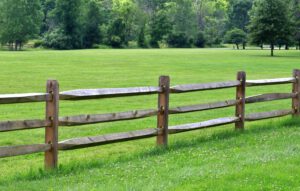

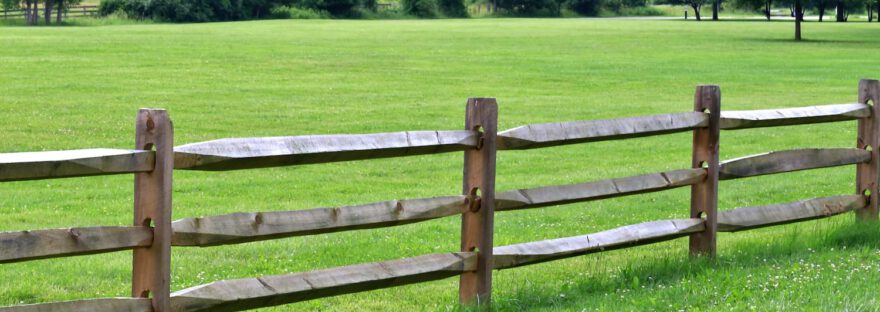

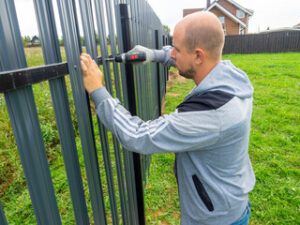 Fences are an important part of any property, providing privacy, security, and aesthetic appeal. However, like any other structure, fences can become damaged over time due to weather, wear and tear, or accidents. When a fence is damaged, it not only affects its functionality but can also detract from the overall appearance of your property. In this article, we will explore the importance of fence repair and the common types of fence damage that require repair.
Fences are an important part of any property, providing privacy, security, and aesthetic appeal. However, like any other structure, fences can become damaged over time due to weather, wear and tear, or accidents. When a fence is damaged, it not only affects its functionality but can also detract from the overall appearance of your property. In this article, we will explore the importance of fence repair and the common types of fence damage that require repair.

